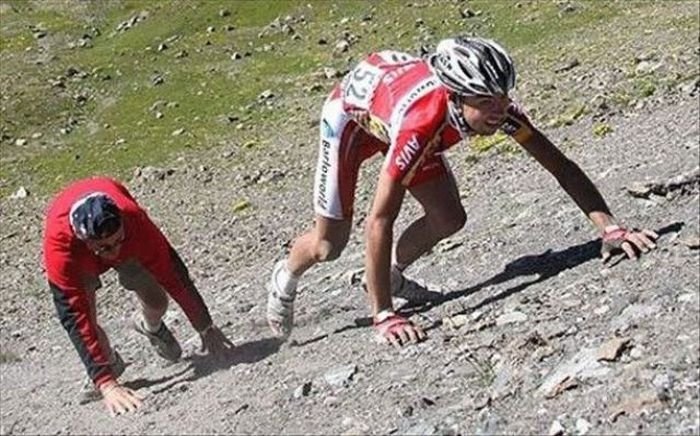|
|
Tour De France Crash
|
L'Auto was not the success its backers wanted. Stagnating sales lower than the rival it was intended to surpass led to a crisis meeting on 20 November 1902 on the middle floor of L'Auto's office at 10 rue du faubourg Montmartre in Paris. The last to speak was the most junior there, the chief cycling journalist, a 26-year-old named Géo Lefèvre. Desgrange had poached him from Giffard's paper. Lefèvre suggested a six-day race of the sort popular on the track but all around France. Long-distance cycle races were a popular means to sell more newspapers, but nothing of the length that Lefèvre suggested had been attempted. If it succeeded, it would help L'Auto match its rival and perhaps put it out of business. It could, as Desgrange said, "nail Giffard's beak shut." Desgrange and Lefèvre discussed it after lunch. Desgrange was doubtful but the paper's financial director, Victor Goddet, was enthusiastic. He handed Desgrange the keys to the company safe and said: "Take whatever you need." L'Auto announced the race on 19 January 1903.
Riders in most stages start together. The first kilometres, the départ fictif, are a rolling start without racing. The real start, the départ réel is announced by the Tour director's waving a white flag. Riders are permitted to touch, but not push or nudge, and to slipstream (drafting). The first to cross the line wins. On flat stages or stages with low hills, which generally predominate in the first week, this leads to spectacular mass sprints. All riders in a group finish in the same time as the lead rider. This avoids dangerous mass sprints. It is not unusual for the entire field to finish in a group, taking time to cross the line but being credited with the same time. Since 2005, when riders fall or crash within the final 3 kilometers of a stage with a flat finish, they are awarded the same time as the group they were in. This change encourages riders to sprint to the finish for points awards without fear of losing time to the group. The final kilometre has been indicated since 1906 by a red triangle – the flamme rouge – above the road. Time bonuses for the first three at intermediate sprints and stage finishes were discontinued with the 2008 race. Stages in the mountains often cause major shifts in the general classification. On ordinary stages, most riders can stay in the peloton to the finish; during mountain stages, it is not uncommon for riders to lose 30 minutes or to be eliminated after finishing outside the time limit. The first photo-finish was in 1955.
|
|









